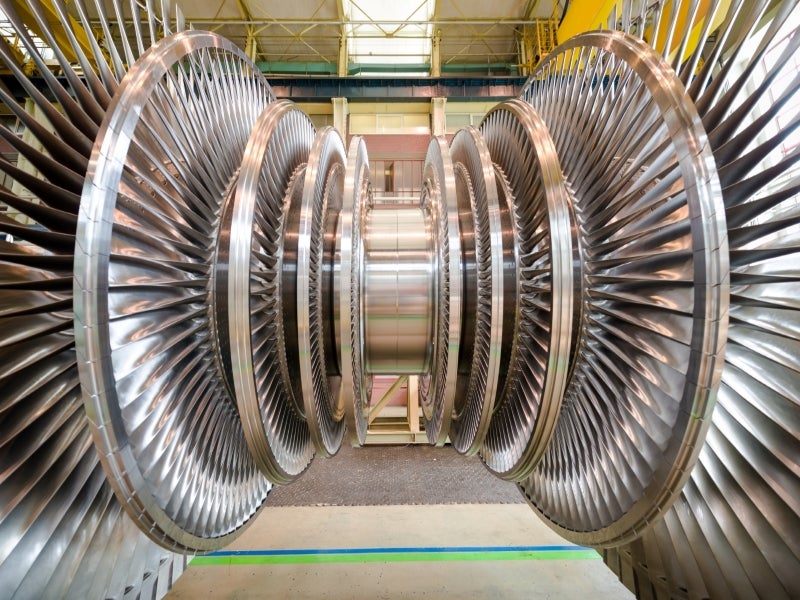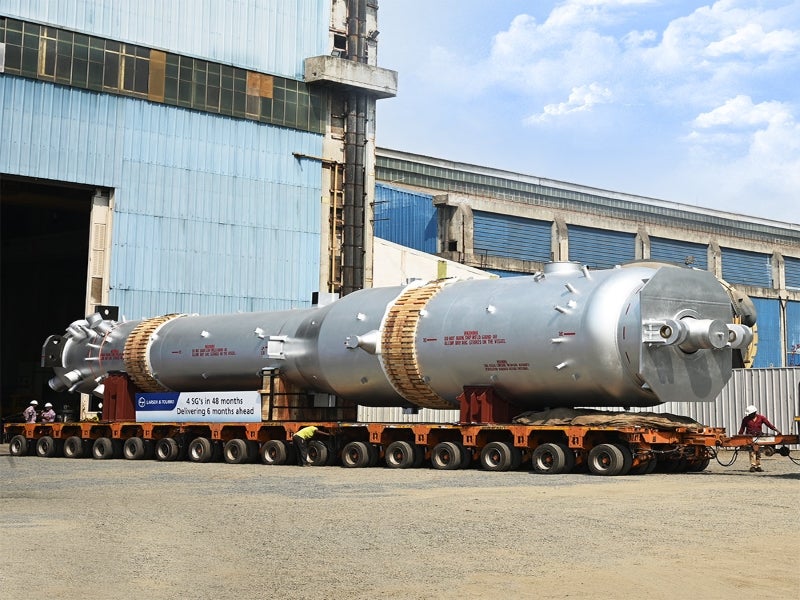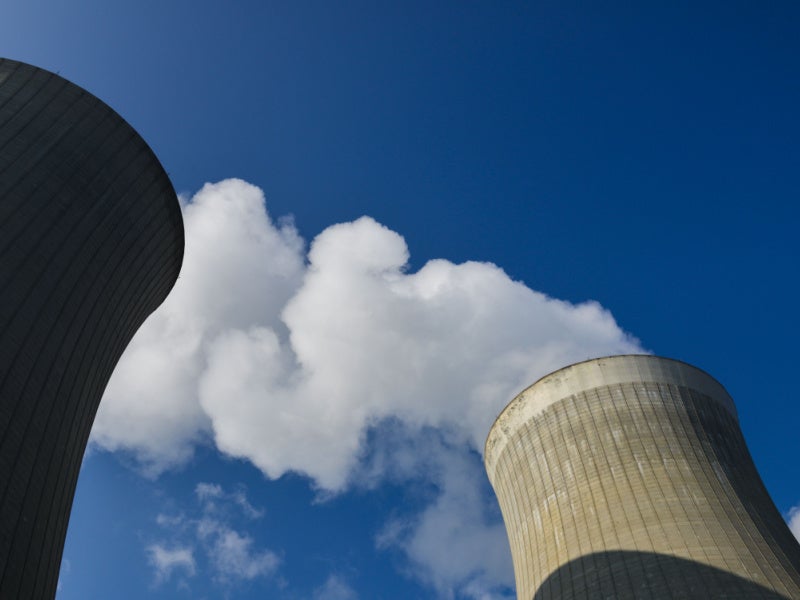The Gorakhpur nuclear power project, also known as the Gorakhpur Haryana Anu Vidyut Pariyojana (GHAVP), is being developed in Gorakhpur in the Indian state of Haryana by the Nuclear Power Corporation of India (NPCIL), a state-owned company.
GHAVP will be the first nuclear power plant in northern India. It is part of India’s domestic nuclear programme to deploy 8.4GW of carbon dioxide-free energy. It will comprise four units with a total installed capacity of 2.8GW.
The project received environmental clearance from the Ministry of Environments and Forests, Government of India, in 2013.
Construction began in 2018, while commissioning of the first unit of the plant is expected in June 2028. The first two units are planned to be completed by 2029.
Location
The Gorakhpur nuclear power plant will be located in Gorakhpur village in the Fatehabad district of Haryana.
The project will be located across 608.48ha of land, including 533.5ha for the project and 75.04ha for a residential township.
The project site is located at longitude 750 37′ 56″ E and latitude 290 26′ 30″ N in Gorakhpur village, Bhuna Tehsil.
The site is located 6km from the NH-10 national highway and 23km from the nearest railway station, Uklana Mandi.
Project phases
The nuclear power project will be implemented in two phases with two pressurised heavy water reactor (PHWR) units in each phase. The first phase includes the construction of two units, GHAVP 1 and GHAVP 2, while the second phase will include the GHAVP 3 and GHAVP 4 units. Each of the four units will have a capacity of 700MWe per unit.
Gorakhpur nuclear power station makeup
The main systems and equipment of the Gorakhpur nuclear power plant will include steam generators, end-shield, primary heat transport system (PHTS), reactor auxiliary systems coolant channel assemblies, calandria, heat exchangers, primary coolant pumps, end fittings and fuelling machine components.
The nuclear building comprising the reactor building and reactor auxiliary building (RAB) will house the main reactor and related process systems.
The reactor building will feature primary and secondary containments. Pre-stressed concrete has been selected for the primary containment, while the secondary containment will be made of reinforced concrete. The RAB will be built as a framed reinforced concrete cement structure. The nuclear buildings will be built as seismic category 1 structures that can withstand the maximum potential earthquake stresses in the region.
Natural uranium oxide in the form of 37-rod clusters contained in the zirconium-niobium pressure tubes will be used as fuel for the plant, while heavy water (D2O) will be used as a coolant and moderator for the reactor.
Steam generators will supply steam in a nearly dry saturated state to the turbine, which will be directly coupled to an electrical generator.
The generator will produce electricity by converting mechanical energy from the turbine into electrical energy.
The Calandria shell with 98 nozzles will facilitate reactor control and monitoring.
Infrastructure details
The project will also include safety-related buildings other than nuclear buildings, such as control buildings, station auxiliary buildings, ventilation stacks with a monitoring room, waste management facilities, exhaust ventilation building, heavy water upgrading plant buildings, an induced draft cooling tower, firewater pump houses, safety-related pump houses, underground tunnels and trenches.
A residential township will be developed for the employees of the plant as part of the project. The township will include amenities such as a parking area that can accommodate 1,500 cars, commercial vehicles and buses, and community facilities including a hospital, a community centre, a school, a shopping centre, a sports complex, a recreation club and a playground.
Construction details
The consent for site excavation work was approved by the Atomic Energy Regulatory Board in February 2018.
The foundation piles in nuclear buildings one and two have been finished for GHAVP 1 and 2.
Construction works are in progress for other plant buildings, tunnels and trenches, warehouses, water conveyance systems and township buildings.
Phase two of the nuclear project covering GHAVP 3 and 4 is in its pre-construction stage.
Water supply for the Gorakhpur atomic power plant and township
The Haryana government has committed to supply 783 million litres per day (MLD) of water, including about 1.2MLD for the township, from the Fatehabad branch canal of the Bhakra main canal.
18,000m³/hr of water is estimated to be required for cooling tower make-up and other plant activities for units 1 to 4. 12,680m³/hr is expected to be used for consumption, while the remaining 5,320m³/hr will be released to the canal.
Safety systems
The project will include multiple safety features to ensure the safe operation of the reactor and to limit potential radiation exposure. The safety systems will include multiple barriers, an emergency core cooling system, double-wall containment structures with steel liners on the inner containment walls of the reactor building, reactor shut-down systems, a containment spray system and an exclusion zone.
Funding
The Indian government sanctioned Rs415.94bn ($5.03bn), including Rs205.94bn for GHAVP 1 and 2 and Rs210bn for GHAVP 3 and 4.
Spending for phase one reached Rs50.42bn as of January 2023. Rs1.52bn has been spent for phase two.
Contractors
BHEL, an engineering company and power equipment manufacturer based in India, was contracted to perform the complete civil works under the turbine island package for GHAVP 1 and 2. The company was selected to provide engineering, procurement and construction services under the turbine island package for the four units of the power plant in 2021.
GE Steam Power, an energy technology company, signed a contract worth $165m with BHEL in June 2022 to provide three nuclear steam turbines for phase one of the project and the Kaiga nuclear power station in the state of Karnataka.
Construction company Larsen & Toubro’s Heavy Engineering arm was awarded orders worth Rs7.47bn to provide steam generators and end shields for the nuclear power plant in March 2018.
The company dispatched the fourth steam generator for the GHAVP project in March 2022.
MECON, a state-owned engineering and consulting company, conducted an environmental impact assessment study for the project and prepared an environmental management plan to minimise potential impact.
ITD Cementation India, an engineering and construction company, was engaged to perform earthwork, ground improvement, confirmatory subsoil investigations, dewatering and pile qualification for the main plant buildings and structures of GHAVP 1 and 2.
Tata Projects, an infrastructure company, received a contract worth $321m from NPCIL for the construction of the main plant buildings, structures and related works of phase one in April 2019.
Benefits
The Gorakhpur nuclear power plant will generate 8,000 jobs during the peak construction phase of the four units. Each phase is expected to provide employment opportunities for 2,000 people once operational.






